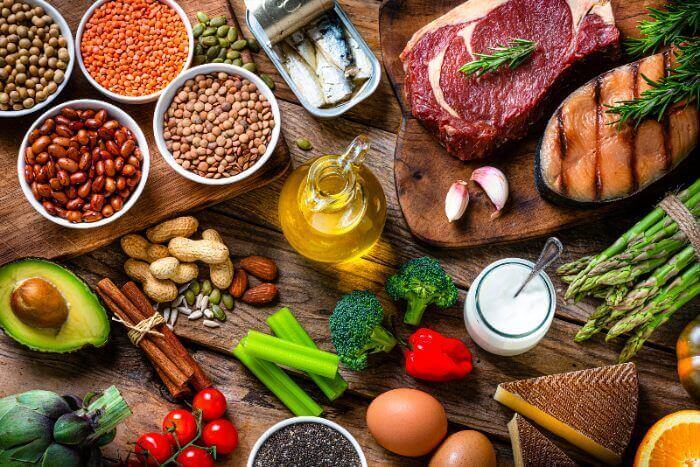What Foods Help Peripheral Artery Disease?

Peripheral artery disease (PAD) affects circulation, especially to the legs, due to plaque buildup in the arteries. One conservative way to manage PAD symptoms is to eat a heart-healthy diet. Consider what foods are good for peripheral artery disease and which ones make it worse.
Best Foods for Peripheral Artery Disease
Incorporate the following foods into your diet to manage peripheral artery disease more effectively:
- Leafy greens: Spinach, kale, and arugula are rich in nitrates, which help relax and widen blood vessels for improved circulation.
- Fatty fish: Salmon, mackerel, and sardines are packed with omega-3 fatty acids, known to help lower cholesterol, reduce inflammation, and improve blood flow.
- Berries: Blueberries, strawberries, and raspberries are full of antioxidants that reduce oxidative damage in blood vessels.
- Whole grains: Oats, quinoa, and brown rice contain fiber that helps manage cholesterol levels.
- Nuts and seeds: Almonds, walnuts, chia seeds, and flaxseeds provide healthy fats, fiber, and protein. These nutrients support heart health by reducing inflammation and improving blood vessel function.
- Citrus fruits: Oranges, grapefruits, and lemons are high in vitamin C, which strengthens blood vessels and improves circulation.
- Legumes: Black beans, lentils, and chickpeas are excellent sources of plant-based protein and fiber. They also provide a steady source of energy without spiking your blood sugar levels.
Bad Foods for Peripheral Artery Disease
While heart-healthy foods improve PAD symptoms, junk food makes them worse. Limit these foods to reduce artery blockage and lower your risk of further vascular issues:
- Processed meats: Bacon, sausage, and deli meat are high in sodium and unhealthy fats, which increase cholesterol and promote plaque buildup in your arteries.
- Sugary beverages: Soda, sweet tea, and fruit juice contain added sugar, causing elevated blood sugar levels, weight gain, and increased blood pressure.
- Fried food: French fries, fried chicken, and doughnuts are high in unhealthy trans fat, contributing to arterial inflammation and blockages.
- High-sodium food: Canned soup, fast food, and potato chips contain excessive sodium, which raises your blood pressure and strains your blood vessels.
- Refined grains: White bread, pasta, and pastries are made from refined grains that have had most of their fiber and nutrients removed. This causes blood sugar spikes, which may worsen PAD symptoms.
- Full-fat dairy: Whole milk, butter, and cheese are high in saturated fat known to increase cholesterol levels and contribute to plaque buildup.
- Red meat: Beef, pork, and lamb contain saturated fat and cholesterol, both of which increase arterial plaque.
Treat PAD at Arizona Vein and Laser Institute
Eating the right food for peripheral artery disease can go a long way toward managing your symptoms and improving your vascular health. When changing your diet isn’t enough, Arizona Vein and Laser Institute is here to help. Our board-certified surgeons can restore your leg vein health with proven treatments like angioplasty and stenting, atherectomy, and laser therapies. Let us help you prioritize your health—schedule a free consultation at one of our six Phoenix-area locations today.
